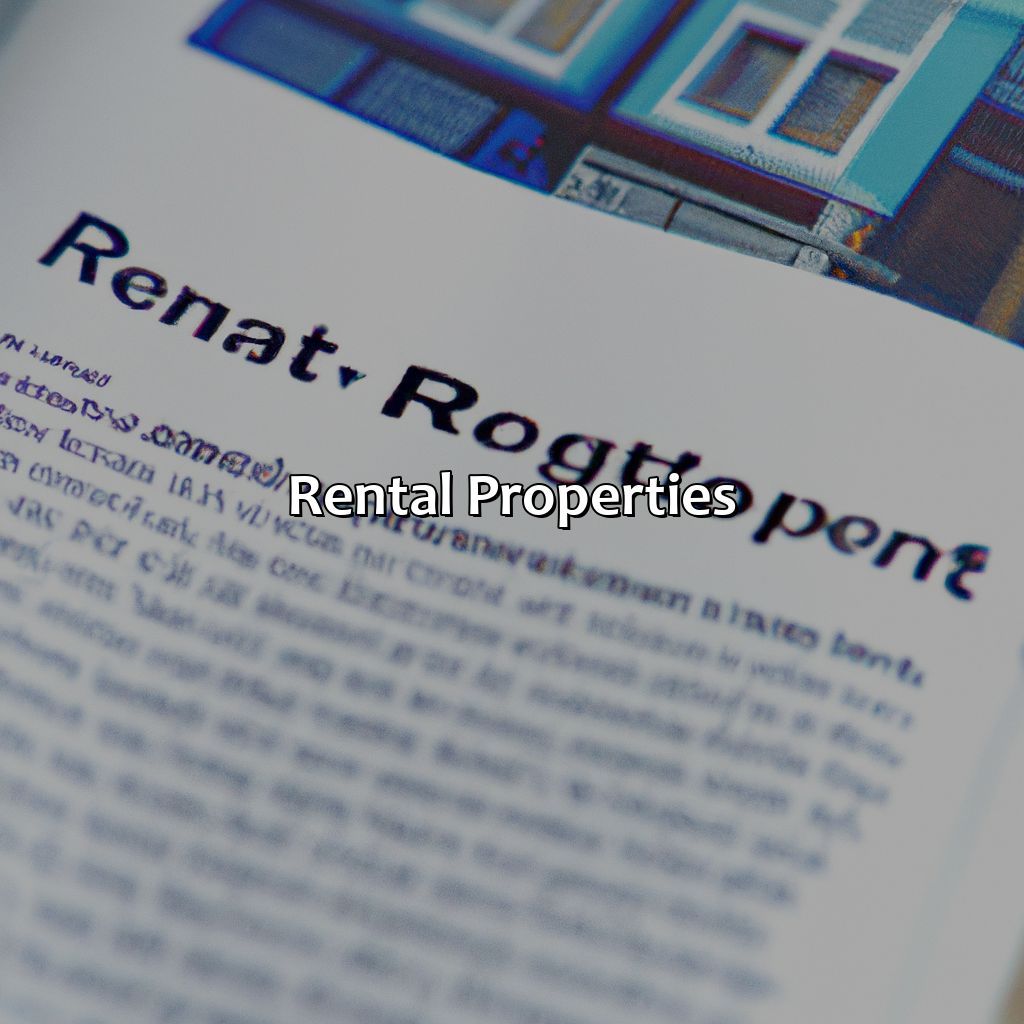What Is The Best Real Estate Investment Strategy?
Key Takeaway:
- There are different real estate investment strategies such as buy-and-hold, flipping properties, investing in REITs, and owning rental properties. Each strategy has its pros and cons, so it is crucial to consider your financial goals and risk tolerance before choosing a strategy.
- The buy-and-hold strategy involves buying a property and holding onto it for an extended period, allowing it to appreciate in value. This strategy offers long-term passive income, but it also requires significant upfront costs, ongoing maintenance, and the risk of market fluctuations.
- Flipping properties involves buying a distressed property, renovating it, and selling it for a profit. This strategy offers quick returns, but it also requires extensive knowledge of the market and the ability to spot undervalued properties. Additionally, flipping properties can be risky if unexpected issues or delays occur during renovation.
- REITs are a type of investment that allows individuals to invest in multiple properties through a single stock. This strategy provides diversification, steady passive income and potential for capital appreciation, but it also has less control over the management decisions of the properties.
- Owning rental properties involves purchasing a property and renting it out for passive income. This strategy offers long-term cash flow, tax benefits and potential property appreciation, but it also requires a lot of ongoing maintenance, tenant management and regulatory compliance.
Are you considering investing in real estate, but don’t know which strategy is right for you? With so many strategies available, it can be difficult to decide which one offers the best return on investment. Read this article to learn the best real estate investment strategy.
Traditional Buy-and-Hold Strategy
Learn about the Traditional Buy-and-Hold Strategy. It’s a popular way to invest in real estate. Investors hold onto a property for a while and get regular income. But, there are also drawbacks. Consider them before using this strategy.

Image credits: retiregenz.com by James Jones
Pros of the Buy-and-Hold Strategy
An effective approach to real estate investment is the Buy-and-Hold Strategy, which has become increasingly popular with investors over the years. This strategy involves investing in a property and holding onto it for an extended period of time, allowing the property to appreciate in value and generate rental income.
The Buy-and-Hold strategy has several advantages for real estate investors including:
- Long-term Income: With the Buy-and-Hold strategy, investors can benefit from long-term passive income by renting out their properties while they appreciate in value.
- Reduced Taxes: Investors can enjoy reduced taxes by using depreciation deductions on their rental properties.
- Hedge against Inflation: By investing in real estate, investors can hedge against inflation as the rents earned increase with inflation.
- Wealth Building: Over time, a well-managed property will appreciate in value, thus providing substantial wealth-building opportunities.
It’s important to note that keeping up with maintenance and regular inspections are crucial steps towards successful implementation of this strategy. It’s advisable to consult with experienced professionals before making a move.
While there are other viable strategies available, each has its own unique advantages and disadvantages that should be evaluated based on specific situations.
You don’t want to miss out on swift, stable gains that come with real estate investments. Consider how implementing this strategy aligns with your investment goals today!
When it comes to the traditional buy-and-hold strategy, the only thing holding you back is the possibility of holding onto a money pit.
Cons of the Buy-and-Hold Strategy
The Potential Shortcomings of the Buy-and-Hold Real Estate Investing Approach
Buy-and-hold is a popular investment strategy in the real estate industry that involves purchasing a property and holding on to it for an extended period, usually with the expectation of generating income through rent or capital appreciation. However, this method is not without its downsides.
- Long-term Commitment – Buy-and-hold properties require significant dedication as they are held for extended periods, potentially resulting in reduced liquidity and tying up resources.
- Market Volatility – The value of real estate can fluctuate over time due to changes in market conditions, such as supply and demand or interest rates.
- Repairs and Maintenance – Property owners who pursue buy-and-hold strategies must assume responsibility for maintaining their assets over time, which can be costly and lead to profit reductions.
- Risk Factors – Owning a rental property may also include potential risks from tenants’ conflicts or financial instability
Furthermore, unexpected values resulting from recessionary economic activity pose a challenge to traditional buy-and-hold approaches.
In response to these issues, experts suggest alternative investing methods such as “value-add” strategies that seek opportunities to enhance assets’ value by improving them physically or administratively. Thus, increasing Net Operating Income (NOI) will increase cash flow. Another opportunity lies with commercial lease restructuring investments. In this approach, revised tenant agreements anchor high occupancy rates delivering more rental income at shorter terms than typical leases while further limiting risk exposure.
Flipping properties is like playing real estate Jenga – one wrong move, and the whole tower comes crashing down.
Flipping Properties
Successfully flipping properties requires a strong real estate investment strategy. Pros of such investments can include quick profits through renovations and reselling. However, there are cons too. These may include unexpected expenses and difficulty in finding buyers.

Image credits: retiregenz.com by David Arnold
Pros of Flipping Properties
Flipping Properties – the Benefits You Cannot Ignore
Flipping properties has many advantages that are hard to overlook. Here are some of them:
- High Returns: Flippers can potentially earn high returns when they sell a home quickly after renovating it.
- Quick Turnover: Flipping properties can be a fast way to see profits, as properties can be bought and sold relatively quickly.
- Flexible Work: Flipping properties allows for a flexible work schedule since most of the work is project-based rather than time-based.
- Tax Benefits: Flippers may be able to avail themselves of certain tax benefits by investing in real estate.
In addition, there are other unique details that can motivate investors to flip their properties successfully, such as property location, financing rates, and market trends.
Don’t miss out on the opportunity to invest in flipping properties. With its potential high returns, quick turnover, flexibility and tax benefits there are many ways you can take advantage of this strategy. Start exploring your options today!
Don’t be surprised if your dream remodel turns into a nightmare renovation.
Cons of Flipping Properties
Flipping properties might not be the optimal venture. Here are some considerations to take into account before venturing into this field.
- High Risk: Flipping a property involves many uncertainties like the time it will take to sell or the amount of profit you can earn. It might result in substantial losses if things don’t go according to your plan.
- Large Capital Requirement: Flipping properties requires a considerable initial investment which includes buying, repairing and renovating costs. You need significant capital resources at your disposal to fund these requirements.
- Effort and Time Intensive: Flipping properties requires significant time commitment and physical effort investment from its investors. Managing all aspects of the renovation project might prove challenging, even for experienced investors.
It is also worth noting that flipping property’s success rates often align with economic trends, industry knowledge, and location-specific demographics.
Pro Tip: Investors should establish their strategy around their goals and objectives while being careful when deciding on their investments. If you’re looking for a shortcut to real estate investing, just remember: REITs to the left, REITs to the right, and cha-cha-cha your way to profits.
REITs (Real Estate Investment Trusts)
Discover the benefits & drawbacks of investing in REITs (Real Estate Investment Trusts). It’s the best strategy for real estate investments. Pros include… Cons include… We’ll explore them both here!

Image credits: retiregenz.com by Harry Arnold
Pros of Investing in REITs
Real estate investment trusts (REITs) offer several advantages making them a reliable investment option for investors. Here are some of the benefits of investing in REITs:
- Diversification: With REITs, investors can diversify their portfolio in the real estate sector without having to buy and manage properties.
- High Dividend Yield: REITs must distribute at least 90% of their income to shareholders as dividends which results in high dividend yields for investors.
- Liquidity: Unlike owning actual properties, REIT shares can be easily bought or sold on the stock market, making them highly liquid investments.
- Professional Management: REITs are managed by qualified professionals who possess expertise in real estate investment. They have a diversified portfolio and monitor market trends continually to increase returns and reduce risks.
- Accessible For Small Investors: Unlike traditional real estate investments that require high capital, individual investors can buy REIT shares with lower purchase thresholds.
Apart from these advantages, another unique feature of REITs is the tax benefits they provide. Overall, investing in REITs offers an opportunity for steady cash flow, portfolio diversification and exposure to lucrative markets like commercial or residential sectors.
It’s important to note that even though REITs offer various benefits, it’s always wise to do thorough research on the company before investing. Additionally, it’s crucial to have a long-term strategy in place rather than jumping on short-term gains.
Investors looking for capital appreciation should consider global companies while those seeking consistent income flows should focus more on domestic ones. Investors should also keep track of macroeconomic factors like interest rates and inflation rates that affect the real estate industry.
Overall, with diligent research and strategic planning, investing in REITs can yield great returns while minimizing risks.
REITs may be a hot property, but investing in them comes with its own set of REITched drawbacks.
Cons of Investing in REITs
REITs come with certain drawbacks that investors should be aware of. These downsides can negatively affect an investor’s portfolio and financial goals. To avoid such risks, one must thoroughly understand the various drawbacks of investing in REITs.
- Market Risk: Investing in REITs is subject to market risks that vary depending on fluctuations in the real estate sector.
- Dependence on Management: Investors in REITs have no direct control over the management of properties, leaving them vulnerable to poor decision-making by the property managers.
- Interest Rate Sensitivity: Changes in interest rates can impact REIT performance, which can hurt your potential returns or cause significant losses.
- Higher Taxes: Taxation of REIT income causes higher taxes for investors as compared to traditional real estate ownership.
While efficient portfolio diversification may minimize these risks, it’s not guaranteed to mitigate them entirely. To optimize investments truly, it’s crucial for investors to consider other alternatives too.
Accordingly, numerous critiques believe that relying solely on this investment option could lead to significant losses and jeopardize an individual’s long-term financial strategy.
In a recent case study from 2020, a listed US Publicly Traded Company invested more than $16bn into a well-known hotel chain through its Acquired Real Estate Portfolio – which includes multiple popular hotels and resorts worldwide. Despite positive net worth at first glance, eight months after immense expenses on renovations and goodwill; they failed to generate expected earnings reported a loss higher than their initial investment at nearly $20M – illustrating how expensive operation costs alone can result in highly volatile returns if not correctly monitored and forecasted alongside substantial predictive analysis models’ implementation.
“Being a landlord is like a game of chess, except the pieces are tenants that never seem to move out of check.”
Rental Properties
Investigate the Rental Properties section! Let’s check out the benefits and drawbacks of owning rental properties as an investment. Uncover the advantages that come with being a landlord and renting out your property. And, discover the potential difficulties you may face.

Image credits: retiregenz.com by James Arnold
Pros of Owning Rental Properties
Owning rental properties can be a lucrative investment strategy for real estate enthusiasts. Here are some reasons why it’s worth considering:
- Steady Income Stream: Rental properties provide predictable monthly income, usually with high return rates compared to other investment opportunities.
- Diversified Portfolio: Investing in rental properties allows portfolio diversification, which means spreading out the risk across various assets that perform differently in the market.
- Capital Appreciation: Rental property investments have a long-term potential of generating capital gains through appreciation.
- Tax Benefits: Real estate investors enjoy various tax benefits such as depreciation deductions, interest expense reduction, and property tax deduction.
- Leverage: Investors can leverage their rental property by obtaining mortgage loans from banks or other financial institutions. This provides them with an opportunity to invest in a high-value asset without having to pay for it upfront.
Lastly, investing in rental properties requires a lot of effort and resources like time, money, skills and adequate knowledge about market trends and consumer needs.
Once I knew an investor who purchased several mid-sized properties at prime locations to build a stable rental base. With proper management strategies like regularly checking tenants’ credit scores, rent collection checks and timely repair expenses management coupled with adherence to laws and regulations, this effort grew into an established business. Today they enjoy regular cash flow generating through their well-maintained properties.
Owning rental properties is like having a never-ending game of Whack-A-Mole, but instead of moles, it’s maintenance issues popping up.
Cons of Owning Rental Properties
When it comes to renting properties, there are some cons you should consider. These may include vacancy periods, time spent on management, unexpected repairs, tenant issues, and financing difficulties.
- Vacancy periods can lead to a loss of income.
- Management requires time and effort.
- Unexpected repairs can be costly.
- Tenant issues can cause stress and legal implications.
- Financing is often challenging and requires significant upfront costs.
It’s essential to note that investing in rental properties may not be suitable for everyone. However, if managed correctly, it can be a lucrative investment opportunity.
One critical detail to keep in mind is the importance of screening tenants carefully. It’s essential to have a thorough process in place to ensure reliable renters who will take care of your property.
A real estate investor once shared their experience with managing rental properties. They mentioned that although it can be a source of passive income, managing multiple tenants can be time-consuming and lead to burnout. It’s crucial to have a proper system in place for management and maintenance to avoid quick burnout.
5 Facts About the Best Real Estate Investment Strategy:
- ✅ Location is a crucial factor when it comes to real estate investment. (Source: The Balance)
- ✅ Diversification across different types of properties and locations can mitigate risk. (Source: Investopedia)
- ✅ Flipping houses can be a profitable short-term investment strategy. (Source: Dave Ramsey)
- ✅ Building a passive income stream through rental properties is a popular long-term strategy. (Source: BiggerPockets)
- ✅ Working with a professional real estate agent or investment advisor can help investors make informed decisions. (Source: Forbes)
FAQs about What Is The Best Real Estate Investment Strategy?
What is the best real estate investment strategy?
There is no one-size-fits-all answer to this question, as the best real estate investment strategy will depend on your individual goals, budget, and risk tolerance. However, some popular real estate investment strategies include buy and hold, flipping, and rental properties.
What is the difference between buy and hold and flipping?
Buy and hold investment strategy involves purchasing a property with the intention of keeping it for a long period of time to generate passive income through rent or appreciation. Flipping, on the other hand, involves buying a property, renovating it and selling it quickly for a profit.
What are the benefits of investing in rental properties?
Rental properties can provide a stable and predictable income stream, tax benefits, and potential capital appreciation. Additionally, when you own a rental property, you have more control over the investment compared to other strategies like REITs.
Is it better to invest in commercial or residential real estate?
It depends on your investment goals and risk tolerance. Commercial real estate often requires a higher investment and can have higher risk, but can also offer higher potential returns. Residential real estate can be a more affordable option with lower risk, but with lower potential returns.
What due diligence should I do before investing in real estate?
Before investing in a real estate property, consider researching the market, perform property inspections, estimate expenses and potential returns, research the neighborhood, and consult with experts such as real estate agents or attorneys.
How can I finance my real estate investment?
There are many ways to finance your real estate investment, such as taking out a traditional mortgage or a hard money loan, using a home equity line of credit, partnering with other investors, or using creative financing strategies like seller financing or lease-purchase agreements.
